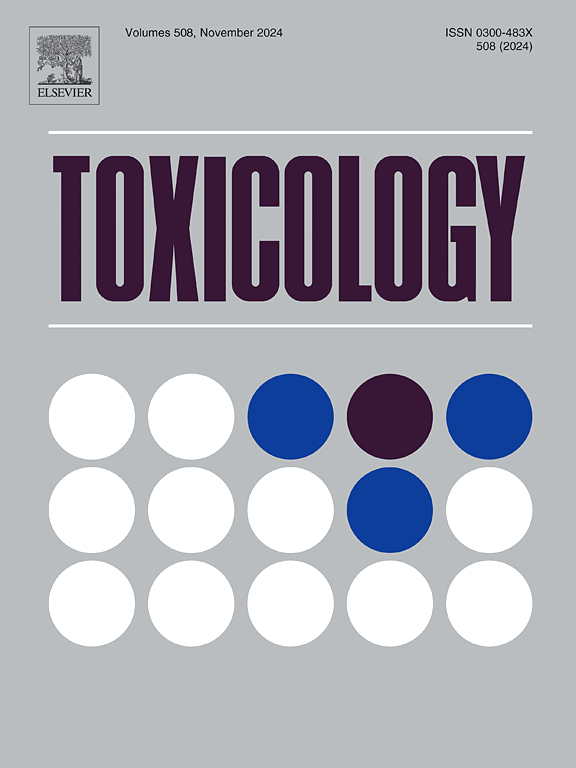miR-200b-3p和miR-424-5p调控Notch信号通路在体外pm2.5诱导动脉粥样硬化中的作用
IF 4.6
3区 医学
Q1 PHARMACOLOGY & PHARMACY
引用次数: 0
摘要
大气颗粒物(PM)是大气污染的主要污染物之一,它吸附了几种有害的有机物质、重金属、细菌和病毒。流行病学研究表明,PM2.5暴露可能会改变动脉粥样硬化的亚临床指标,但其机制尚不清楚。本研究将THP-1细胞分化的巨噬细胞和泡沫细胞分别暴露于PM2.5(0、25、50和100μg/mL)中。PM2.5暴露可降低miR-200b-3p和miR-424-5p的表达,从而调控巨噬细胞和泡沫细胞的Notch信号通路,影响脂质代谢相关基因(ABCA1、LDLR、SR-A、SR-BI和CD36)的表达,加重脂质代谢功能障碍,导致动脉粥样硬化。本研究为动脉粥样硬化的防治提供了新的思路。本文章由计算机程序翻译,如有差异,请以英文原文为准。
Effects of miR-200b-3p and miR-424–5p regulating notch signaling pathway on atherosclerosis induced by PM2.5 in vitro
Atmospheric particulate matter (PM) is one of the main pollutants of air pollution, which adsorbs several harmful organic substances, heavy metals, bacteria, and viruses. Epidemiological research has demonstrated that PM2.5 exposure might alter subclinical markers of atherosclerosis while the mechanism is unclear. In the current study, macrophages and foam cells that were differentiated from THP-1 cells were exposed to PM2.5 (0, 25, 50, and 100 μg/mL). PM2.5 exposure reduce the expression of miR-200b-3p and miR-424–5p, thereby regulating the Notch signaling pathway in macrophages and foam cells, which affects the expression of lipid metabolism-related genes (ABCA1, LDLR, SR-A, SR-BI and CD36) and aggravates the dysfunction of lipid metabolism and leads to atherosclerosis. The study provides new ideas for the prevention and treatment of atherosclerosis.
求助全文
通过发布文献求助,成功后即可免费获取论文全文。
去求助
来源期刊

Toxicology
医学-毒理学
CiteScore
7.80
自引率
4.40%
发文量
222
审稿时长
23 days
期刊介绍:
Toxicology is an international, peer-reviewed journal that publishes only the highest quality original scientific research and critical reviews describing hypothesis-based investigations into mechanisms of toxicity associated with exposures to xenobiotic chemicals, particularly as it relates to human health. In this respect "mechanisms" is defined on both the macro (e.g. physiological, biological, kinetic, species, sex, etc.) and molecular (genomic, transcriptomic, metabolic, etc.) scale. Emphasis is placed on findings that identify novel hazards and that can be extrapolated to exposures and mechanisms that are relevant to estimating human risk. Toxicology also publishes brief communications, personal commentaries and opinion articles, as well as concise expert reviews on contemporary topics. All research and review articles published in Toxicology are subject to rigorous peer review. Authors are asked to contact the Editor-in-Chief prior to submitting review articles or commentaries for consideration for publication in Toxicology.
 求助内容:
求助内容: 应助结果提醒方式:
应助结果提醒方式:


